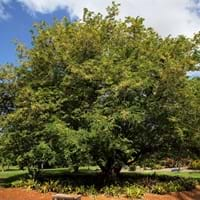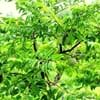Life Span
Perennial
Perennial
Origin
Mexico, Central America, South America
Africa, India, Southeast Asia
Types
Not Available
Sweet Tamarind, Australian tamarind, Manila tamarind, Velvet tamarind, Spanish Tamarind
Habitat
Coastal Regions
Subtropical climates, Tropical regions
USDA Hardiness Zone
11-15
9-11
AHS Heat Zone
12-1
Not Available
Sunset Zone
A1, A2, A3, H1, H2, 1a, 1b, 2a, 2b, 3a, 3b, 4, 5, 6, 7, 8, 9, 10, 11, 12, 13, 14, 15, 16, 17, 18, 19, 20, 21, 22, 23, 24
Not Available
Habit
Upright/Erect
Spreading
Flower Color
Yellow
Red, Yellow
Flower Color Modifier
Bicolor
Bicolor
Leaf Color in Spring
Green, Dark Green
Green
Leaf Color in Summer
Green, Dark Green
Dark Green, Green
Leaf Color in Fall
Green, Dark Green
Dark Green, Yellow green
Leaf Color in Winter
Green, Dark Green
Dark Brown, Green
Plant Season
Spring, Summer, Fall
Spring, Summer, Fall, Winter
Sunlight
Full Sun
Full Sun, Partial Sun
Type of Soil
Loam, Sand
Clay, Loam, Sand
The pH of Soil
Neutral
Acidic
Soil Drainage
Well drained
Average
Bloom Time
Indeterminate
Late Spring
Tolerances
Drought
Drought, Salt
Where to Plant?
Container, Ground
Ground
How to Plant?
Grafting, Seedlings
Layering, Seedlings, Transplanting
Plant Maintenance
Medium
Low
Watering Requirements
Needs more water during establishment
Do Not over Water, Keep the ground moist but not water-logged
In Summer
Lots of watering
Lots of watering
In Spring
Moderate
Moderate
In Winter
Average Water
Average Water
Soil Type
Loam, Sand
Clay, Loam, Sand
Soil Drainage Capacity
Well drained
Average
Sun Exposure
Full Sun
Full Sun, Partial Sun
Pruning
Pinch or prune as they grow to promote branching and bushiness
Remove damaged leaves, Remove dead branches, Remove dead leaves
Fertilizers
14-14-14 Fertilizer, Compost
6-6-6 or 8-8-8
Pests and Diseases
Anthracnose, Aphids, Red blotch, Rust
Aphids, Borers, Mealybugs, Onion thrips, Root weevil, Soft scales, Whiteflies
Plant Tolerance
Heat Tolerance, Salt and Soil Compaction
Drought
Flower Petal Number
Single
Single
Fragrant Bark/Stem
Yes
No
Foliage Texture
Medium
Bold
Foliage Sheen
Matte
Matte
Attracts
Aphids, Not Available, Squirrels
Beetles, Birds, Scale Insects
Allergy
Stomach pain, Vomiting
Diarrhea, Hives, Nausea, Vomiting
Aesthetic Uses
Used in parkland
Beautification
Beauty Benefits
Anti-ageing, Blackheads, Reduce Bruises
Glowing Skin, Good for skin, Improve skin tone, Reduces ageing, Skin cleanser
Environmental Uses
Shadow Tree, Soil protection
Food for animals, Food for birds, Food for insects, Nesting sites for birds
Medicinal Uses
Dehydration, Diabetes, Diarrhea, Nutrients, Weight loss
Antioxidants, Inflammation, Rheumatism, Skin Disorders, Sore throat
Part of Plant Used
Fruits
Flowers, Fruits, Leaves
Other Uses
Application in Handicrafts, Food for animals, Showy Purposes
Culinary use, Used as a nutritious food item, Used as Ornamental plant, Used for its medicinal properties
Used As Indoor Plant
No
No
Used As Outdoor Plant
Yes
Yes
Garden Design
Edible, Herb, Vegetable
Edible, Fruit / Fruit Tree, Shade Trees
Botanical Name
Manilkara zapota
Tamarindus indica
Common Name
sapodilla , chikoo, Sapota
Tamarind tree, Tamarind
In Hindi
चीकू
इमली का पेड़
In German
Breiapfelbaum
Tamarinde
In French
Sapotillier
tamarinier
In Spanish
chicle
tamarindo
In Greek
sapodilla
δέντρο Tamarind
In Portuguese
sapodilla
tamarindo
In Polish
Pigwica właściwa, sapodilla
drzewo tamaryndowca
In Latin
sapodilla
tamarind ligno
Phylum
Magnoliophyta
Magnoliophyta
Class
Magnoliopsida
Magnoliopsida
Family
Sapotaceae
Fabaceae
Clade
Angiosperms, Asterids, Eudicots
Angiosperms, Eudicots, Rosids
Subfamily
Sapotoideae
Caesalpinioideae
Number of Species
Not Available
Season and Care of Sapodilla and Tamarind tree
Season and care of Sapodilla and Tamarind tree is important to know. While considering everything about Sapodilla and Tamarind tree Care, growing season is an essential factor. Sapodilla season is Spring, Summer and Fall and Tamarind tree season is Spring, Summer and Fall. The type of soil for Sapodilla is Loam, Sand and for Tamarind tree is Clay, Loam, Sand while the PH of soil for Sapodilla is Neutral and for Tamarind tree is Acidic.
Sapodilla and Tamarind tree Physical Information
Sapodilla and Tamarind tree physical information is very important for comparison. Sapodilla height is 150.00 cm and width 60.00 cm whereas Tamarind tree height is 1,800.00 cm and width 800.00 cm. The color specification of Sapodilla and Tamarind tree are as follows:
Sapodilla flower color: Yellow
Sapodilla leaf color: Green and Dark Green
Tamarind tree flower color: Red and Yellow
- Tamarind tree leaf color: Green
Care of Sapodilla and Tamarind tree
Care of Sapodilla and Tamarind tree include pruning, fertilizers, watering etc. Sapodilla pruning is done Pinch or prune as they grow to promote branching and bushiness and Tamarind tree pruning is done Remove damaged leaves, Remove dead branches and Remove dead leaves. In summer Sapodilla needs Lots of watering and in winter, it needs Average Water. Whereas, in summer Tamarind tree needs Lots of watering and in winter, it needs Average Water.





